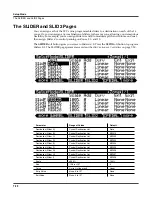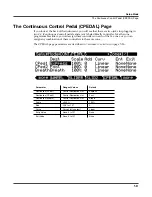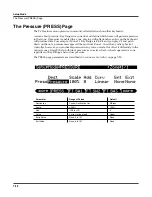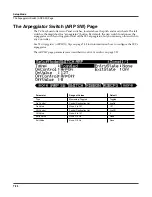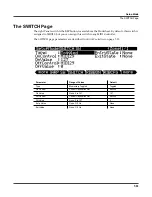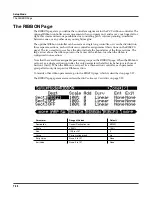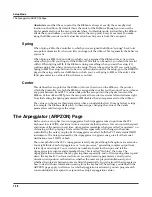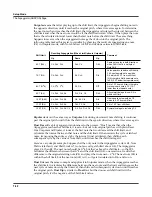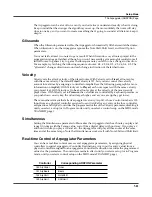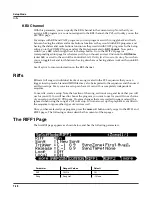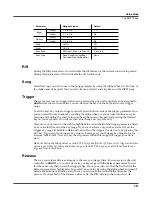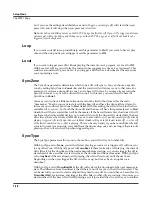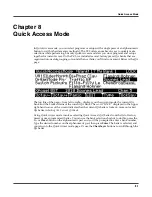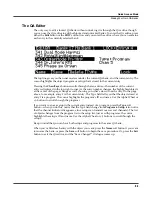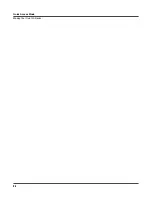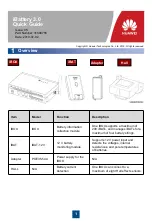
Setup Mode
The Arpeggiator (ARPZON) Page
7-43
The Arpeggiator can be a lot of fun, even if you don’t always understand exactly what it’s doing.
Keep in mind that the stranger the algorithm you set up, the more unlikely the notes will stay
close to one key, so if you want to create something that’s going to sound at all diatonic, keep it
simple.
Glissando
When the Glissando parameter is
On
, the Arpeggiator chromatically fills between latched notes.
When Glissando is on, the Arpeggiator ignores the Note Shift, Shift Limit, and Limit Option
parameters.
You must latch at least two notes to get a result. When Glissando is on, all notes played in the
arpeggiation range get latched, although you won’t necessarily get meaningful results from all
latched notes. In general, try to get each subsequent note you latch to be a change in direction.
For example, try latching the following sequence of notes: C4, C5, G4, G5, C5, C6, G4, G5. The
“glissando” changes direction around each change in direction of the latched notes.
Velocity
Velocity sets the attack velocity of the played notes. With Velocity set to
Fixed
, all notes play
with the same velocity. The default
Fixed
velocity is 127, but you can control this velocity
amount in real-time by assigning a controller to
ArpVel
(see the following paragraph for more
information on
ArpVel
). With Velocity set to
Played
, each note repeats with the same velocity
you played it at. With Velocity set to
Last
, all notes play at the velocity of the most recently
played note. With Velocity set to
Pressure
, the velocities are controlled by keyboard pressure: as
you push down on any key, the velocities get higher, and as you ease up they get lower.
There’s another element that affects arpeggiator velocity: ArpVel, whose Control number is 155.
Input from any physical controller assigned to send ArpVel (or any entry value for a controller
assigned to send ArpVel) overrides the programmed value of the Velocity parameter, disabling it
until you select a setup (or in Program mode, until you select a control setup on the MIDI-mode
TRANSMIT page).
Simultaneous
Setting the Simultaneous parameter to
On
makes the Arpeggiator latch each note you play and
repeat it in time with the Tempo value, sort of like a digital delay with no decay. If you play a C
and hold it while you play an E and a G, the Arpeggiator will play all three notes at the same
time and at the same tempo. Note that Simultaneous works well with Note Shift and Shift limit.
Real-time Control of Arpeggiator Parameters
You can have real-time control over several arpeggiator parameters, by assigning physical
controllers to special arpeggiator Controller Destinations. Any input (or entry value) from a
physical controller assigned to an arpeggiator Controller Destination overrides the programmed
values for the parameters. The override remains in effect until you select a setup (or in Program
mode, until you select a control setup on the MIDI-mode TRANSMIT page).
Controller
Corresponding ARPZON Parameter
150 ArpOrder
Order
151 ArpBeats
Beats
152 ArpShift
NoteShift
153 ArpLimit
ShiftLimit
Summary of Contents for PC3
Page 24: ...1 6 Introduction Options ...
Page 50: ...4 4 The Operating Modes Using the Modes ...
Page 174: ...7 54 Setup Mode The Utility Soft Buttons ...
Page 178: ...8 4 Quick Access Mode Making Your Own QA Banks ...
Page 204: ...9 26 Effects Mono Algorithms ...
Page 266: ...A 2 MIDI Implementation Chart ...
Page 308: ...Index x ...


